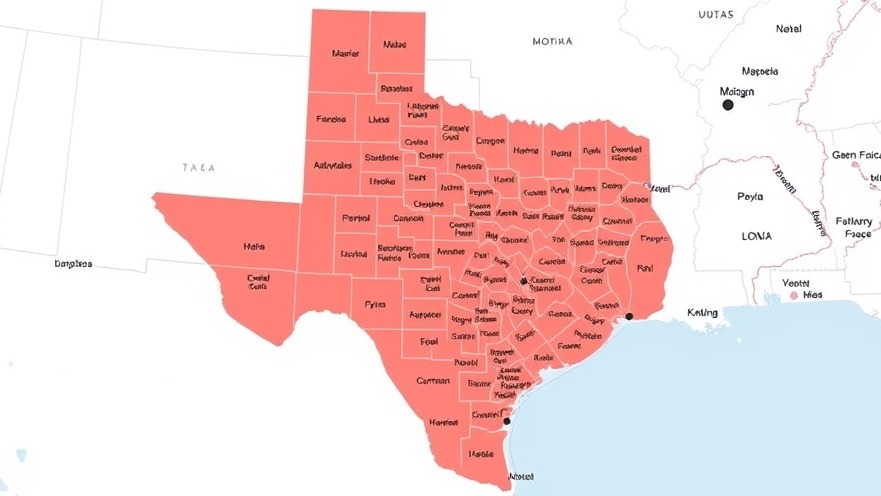
What the Draft Texas Congressional Map Means for Democrats
The current political landscape in Texas is undergoing a seismic shift, especially for Democratic incumbents. The newly proposed congressional map designed by Texas Republicans threatens to reshape blue districts in Austin, Dallas, and Houston, potentially igniting intense primary battles among Democratic lawmakers. As these Democrats are packed into fewer districts, the question arises: will they succeed in maintaining their seats or will they be forced into a fight against fellow party members?
Power Play: The Strategy Behind Redistricting
The draft map introduced by state Rep. Todd Hunter, R-Corpus Christi, is viewed as a strategic maneuver by Texas Republicans to bolster their presence in traditionally blue areas. By clustering multiple Democratic incumbents into single districts, the GOP aims to dilute their voting power and increase the likelihood of securing Republican victories in nearby districts. This tactic is not new; it reflects a long-standing practice known as gerrymandering, where district lines are manipulated to favor one party over another.
The Potential Impact on Democratic Incumbents
With battles brewing, prominent Texas Democrats, including U.S. House Minority Leader Hakeem Jeffries, are rallying their party to oppose this redistricting effort. Incumbents such as Reps. Lloyd Doggett and Greg Casar from Austin find themselves facing off against each other in a single district—raising concerns about unity within the party as older, seasoned representatives clash with younger, progressive voices. This generational divide could complicate strategies as candidates must not only navigate the intricacies of the new map but also address the larger ideological divides that accompany it.
Tensions in the Dallas-Fort Worth Metroplex
Further complicating the scenario are the dynamics in the Dallas-Fort Worth area, where three Democratic incumbents face a stark choice: consolidate their influence amidst dwindling blue districts or risk being overpowered by their Republican counterparts. Rep. Julie Johnson’s district, for instance, could be entirely redrawn, forcing her to either fight in a challenging GOP area or vie against her Democratic colleagues in a battle for survival in the remaining blue seats.
Historical Significance and Future Predictions
The implications of these redistricting decisions reach far beyond immediate political survival. For the first time since the legendary Rep. Barbara Jordan held the 18th Congressional District, voters in Houston are bracing for a potentially significant change in representation due to the recent death of former Rep. Sheila Jackson Lee. The reverberations from this district's realignment could redefine the historical narrative of minority representation in Congress.
Counterarguments and Diverse Perspectives
While some view the Republicans' strategy as a necessary adaptation to changing demographics, others argue that it undermines fair representation and intentionally distorts the political landscape to secure party dominance. As Democrats voice their concerns over the map being economically and racially discriminatory, legal battles loom, suggesting that the draft map could face significant scrutiny.
Taking Action: What Lies Ahead for Texas Democrats
For now, Texas Democrats are gearing up for what could prove to be one of the most critical election cycles in recent memory. With potential legal challenges to the proposed map anticipated, the next steps taken by incumbents and aspiring politicians may very well dictate the future of Texas politics. Should they remain united against this redistricting plan, Democrats could forge a stronger coalition, or risk splintering into factions that weaken their influence in the years to come.
Conclusion: The Fight for Representation
The contentious draft congressional map serves as a stark reminder of the ongoing struggle for political power in Texas. As the 2026 elections approach, Texas Democrats face a crucial crossroads. Will they embrace collaboration and unite to challenge these redistricting changes, or will internal conflicts lead to diminished representation in Congress? The outcome will not only shape the state’s political landscape but potentially influence national politics for years to come.
 Add Element
Add Element  Add Row
Add Row 



Write A Comment